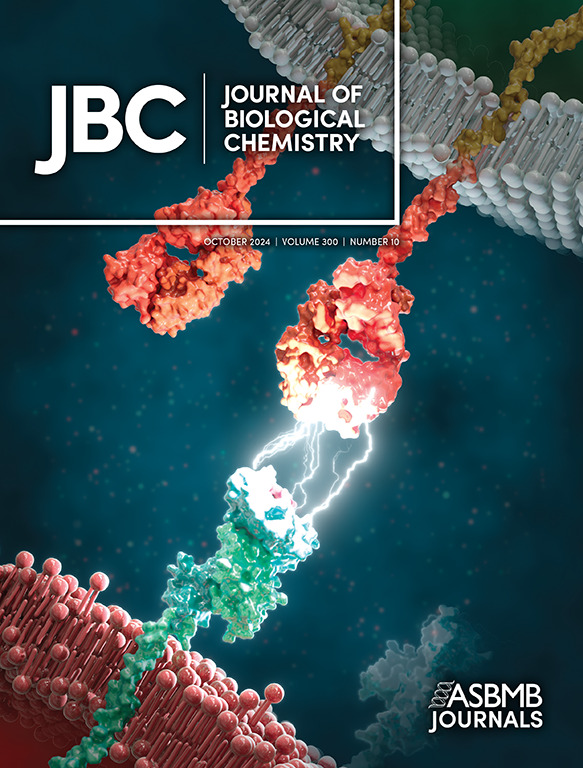Characterization of the activity of KTX-1001, a small molecule inhibitor of multiple myeloma SET domain (MMSET) using surface plasmon resonance (SPR)
IF 4
2区 生物学
Q2 BIOCHEMISTRY & MOLECULAR BIOLOGY
引用次数: 0
Abstract
KTX-1001 is a small molecule inhibitor of MMSET in early clinical development for multiple myeloma. It was identified as a potent and selective inhibitor of MMSET (also known as NSD2) using a high throughput biochemical assay with LC/MS-MS detection of SAH production as the endpoint. Subsequent evaluation of the binding of KTX-1001 to its target was conducted using surface plasmon resonance (SPR) to quantify on-rate, off-rate, and equilibrium dissociation constant utilizing the SET domain as the immobilized target. In this format, no saturable or specific binding could be observed, despite the potent activity in the assay using full length NSD2 and radiolabeled SAM. To interrogate the discordance between potent activity and the lack of detectable binding in the assay, a series of experiments were designed in which KTX-1001 with a biotin-PEG tether (KTX-1001-3) was immobilized to the chip, with target (NSD2 SET domain) in-flow, with nucleosomes and with and without cofactor. These experiments demonstrated that KTX-1001-3 bound to the SET domain in a specific and saturable manner, with an affinity comparable to the IC利用表面等离子体共振(SPR)表征多发性骨髓瘤SET结构域(MMSET)小分子抑制剂KTX-1001的活性
KTX-1001是一种用于多发性骨髓瘤早期临床开发的MMSET小分子抑制剂。通过以LC/MS-MS检测SAH产生为终点的高通量生化试验,确定它是一种有效的选择性MMSET抑制剂(也称为NSD2)。随后使用表面等离子体共振(SPR)对KTX-1001与其靶标的结合进行了评估,以SET结构域作为固定化靶标,量化开合率、开合率和平衡解离常数。在这种格式中,尽管使用全长NSD2和放射性标记的SAM具有有效的活性,但没有观察到饱和或特异性结合。为了探究检测中有效活性与缺乏可检测结合之间的不一致,设计了一系列实验,其中将KTX-1001与生物素- peg系链(KTX-1001-3)固定在芯片上,目标(NSD2 SET结构域)流动,核小体和有无辅因子。这些实验表明,KTX-1001-3以一种特异性和饱和的方式结合到SET结构域,其亲和力与酶促测定的IC50相当。此外,这些研究证实了KTX-1001在核小体、辅因子和组合存在下的独特结合特性。这些数据以一种“反向”的形式确定了SPR的效用,其中固定KTX-1001允许询问与蛋白质靶标的结合,如果在生物靶标与芯片表面的耦合中引起构象变化,则可能具有挑战性。总的来说,这一分析证明了KTX-1001对MMSET的特异性有效生化活性,并支持了KTX-1001在临床中的持续评估。
本文章由计算机程序翻译,如有差异,请以英文原文为准。
求助全文
约1分钟内获得全文
求助全文
来源期刊

Journal of Biological Chemistry
Biochemistry, Genetics and Molecular Biology-Biochemistry
自引率
4.20%
发文量
1233
期刊介绍:
The Journal of Biological Chemistry welcomes high-quality science that seeks to elucidate the molecular and cellular basis of biological processes. Papers published in JBC can therefore fall under the umbrellas of not only biological chemistry, chemical biology, or biochemistry, but also allied disciplines such as biophysics, systems biology, RNA biology, immunology, microbiology, neurobiology, epigenetics, computational biology, ’omics, and many more. The outcome of our focus on papers that contribute novel and important mechanistic insights, rather than on a particular topic area, is that JBC is truly a melting pot for scientists across disciplines. In addition, JBC welcomes papers that describe methods that will help scientists push their biochemical inquiries forward and resources that will be of use to the research community.
 求助内容:
求助内容: 应助结果提醒方式:
应助结果提醒方式:


